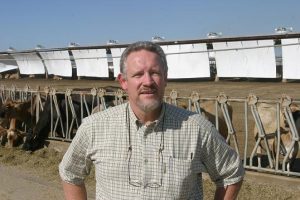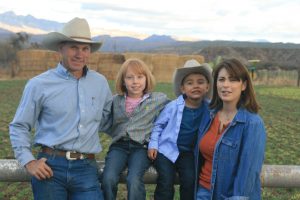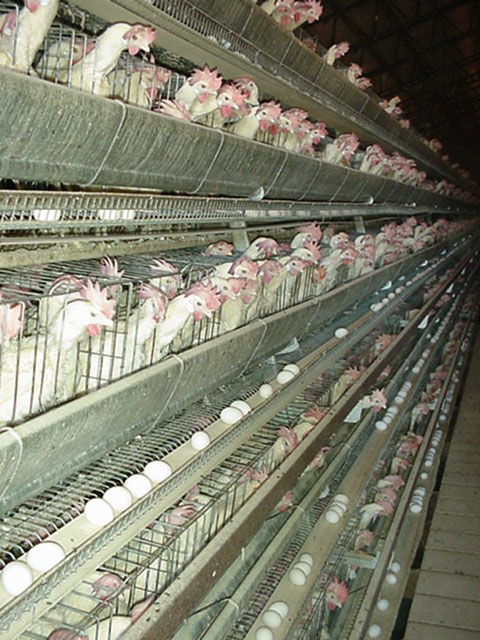By Julie Murphree, Arizona Farm Bureau
If you were old enough, you might remember April 22, 1970. That year was Earth Day’s inauguration year. It’s credited by many for launching the modern environmental movement. The passage of the Clean Air Act, Clean Water Act, Endangered Species Act and other environmental laws soon followed the first Earth Day 41 years ago. According to the Earth Day Network, more than 1 billion people now participate in Earth Day activities each year, making it the largest civic observance in the world.
The theme for this year’s Earth Day is “A Billion Acts of Green.” According to the Earth Day Network, “A Billion Acts of Green – the largest environmental service campaign in the world–inspires and rewards simple individual acts and larger organizational initiatives that further the goal of measurably reducing carbon emissions and supporting sustainability. The goal is to register 1 billion actions in advance of the global Earth Summit in Rio in 2012.”
Earth Day may be the largest civic observance in the world and the Earth Day Network may be attempting to register “A Billion Acts of Green,” but such efforts will never measure up to the daily “acts of green” found on our Arizona and American farms and ranches.
Shortly after Earth Day 2010, the United States Department Agriculture’s (USDA) Natural Resources Conservation Service released the latest National Resources Inventory (NRI). Through empirical data, the NRI shows that America’s farmers and ranchers care for the land, and through their actions the environment has continually improved over the past 50 years, while at the same time farm and ranch productivity has dramatically increased even while resources needed for farming, like land and water, have been reduced.
Though every productive farm and ranch represents a billion acts of green, we’ll highlight just a few Arizona farm and ranch profiles that reflect what the NRI data are telling us and reveal the reality of our modern-day farmers and ranchers. The days of the farmer in overalls with pitchfork and mule team are long gone.
Modern-Day Farms and Ranches in Arizona Daily Produce Your “Billion Acts of Green”
“Sustainability” is the buzzword for the green movement. Many espouse a farm is only sustainable if small, organic and producing singularly for the local or regional market. But sustainable American farms come in all shapes and sizes and produce for local, regional, national and international markets generation after generation, growing season after growing season and most of the time on the same land.
And truly sustainable farms and ranches are like Andy and Stefanie Smallhouse’s Carlink Ranch, located in Reddington, Arizona and established in the late 1800s. Fifth-generation cattle ranchers, Andy and his family before him have been raising cattle, growing hay and other forage on the same 100-square miles in southern Arizona for more than 120 years.
“America’s farm and ranch families are dedicated to caring for the land,” says Stefanie Smallhouse, also 2nd-vice president for Arizona Farm Bureau’s Board of Directors.
The Smallhouses innovate on their ranch all the time to improve the business and their bottom line. This includes producing their own biofuel from used cooking oil they collect from area restaurants. “Recycling used cooking oil reduces our fuel costs to operate our ranch,” says Andy.
Andy’s grazing management practices also conserve the land and improve efficiencies. As a result, their ranch’s biodiversity, with elevations ranging from 2,500 to 6,000 feet, is home to vast amounts of wildlife and birdlife.
You can find various innovative approaches on Arizona dairies too. By adopting new management practices and production enhancing technologies, over the years dairy farmers have been able to help reduce the dairy industry’s carbon footprint by more than 63 percent, according to the USDA. Today, more milk is produced with only 9 million cows than with 26 million cows in 1944. Another way to understand dairy cow milk production is to examine since 1980 the pounds of feed (grain, forage, etc) a cow now consumes to produce 100 pounds of milk. A cow’s feed consumption has decreased by more than 40% on average in the last 30 years.
Any dairy farmer will tell you they are committed to a healthy population and a healthy planet. And regards to sustainability on Arizona dairies, the average Arizona dairy farm is in its second generation of dairy production. Many Arizona dairy families are third-generation dairies.

Third-generation Dairy Farmer Paul Rovey says Arizona dairy families possess a longstanding commitment to sustainability.
“Arizona dairy producers have a longstanding commitment to sustainability,” explains Paul Rovey of Rovey Dairy, a third-generation dairy in Glendale, Arizona and features Jersey cows in his dairy herd. “We take care of the cows; the cows replenish the soil, which in turn, grows food for the cows. Dairy farming is about providing a nutritious product that enhances the health and wellness of humanity while leaving the earth better for the next generation. We are committed to continuous improvement.” And that continuous improvement is evident in the USDA data.
While farm and ranch productivity has increased dramatically since 1950, the use of resources (labor, seeds, feed, fertilizer, etc.) required for production has markedly declined. Howard Wuertz of Sundance Farms in Coolidge, Arizona is yet another example of Arizona’s abundant crop of farmers and ranchers that are sustainable and year after year keep improving productivity numbers.
Howard Wuertz’s parents planted their first cotton crop more than 80 years ago in Arizona at a time when rattlesnakes and coyotes dominated the landscape more than people. Today, Wuertz holds five patents in new farming technology primarily for minimum tillage above and between subsurface drip irrigation lines. He developed and was one of the first in Arizona to introduce drip irrigation to cotton farming to reduce water use. This and other innovations have continued to increase his yields.
“We reduced water use by 50% with our drip irrigation system,” said Howard Wuertz, one of the principal owners of Sundance Farms and an Arizona Farm Bureau member, “and generally on most crops like alfalfa, cotton, wheat and corn increased our yields by 30%.”
And it’s not just about conservation and resource reduction to save water and land, it’s also about recycling. Just ask Hickman Family Farms, Arizona’s only commercial egg producing family.
In 1944, Bill and Gertie Hickman started raising chickens and selling eggs to local restaurants from their home in Glendale, Arizona, beginning with no more than 500 birds. Today, the entire family including four of the five Hickman kids, manage more than 5 million laying hens in modern, stress-free, air-conditioned facilities to provide millions of eggs for Arizona families each year.
Their farm is nearly closed looped and just about everything is recycled. Waste material including chicken manure and egg shells is composted and sold to a variety of businesses including organic farms.
Ranchers, dairy producers and farmers like the Smallhouse, Rovey and Wuertz families keep producing more food, fiber and fuel than ever before on fewer acres with fewer resources.
“Such modern production tools as global positioning satellites, biotechnology, conservation tillage and integrated pest management practices enhance farm and ranch productivity while reducing the environmental footprint,” explains Arizona Farm Bureau President Kevin Rogers, a third-generation cotton, wheat and alfalfa Arizona farmer based in Mesa, Arizona. “America’s farm and ranch families are dedicated to caring for our planet. They are ethical caretakers of the land and water resources that help make our nation’s bounty possible.”
President of United Dairymen of Arizona, Rovey adds, “The look of dairy farms has changed, but our values of caring for the environment are even stronger. Generations of Arizona dairy farmers have studied the science of caring for our environment’s health. This commitment to sustainability is for our children, our community and the earth.”
Rogers, who along with family members farms more than 7,000 acres, also points out that in addition to their ethical dedication to protecting the land; it’s in the economic interest of Arizona farmers and ranchers to care for our natural resources like water and land.
“America’s farmers and ranchers take their commitment to land stewardship very seriously, especially if they want to keep farming for the next generation. That’s why you easily and regularly meet 3rd, 4th and 5th generation Arizona farmers.”
Finally, despite all the challenges of farming including un-cooperative weather, cost and regulatory burdens, America’s farmers and ranchers are doing their part to feed a growing world. Total U.S. crop yield (tons per acre) has increased more than 360% since 1950.
Notes
Access the full text of the NRI report here: http://www.nrcs.usda.gov/technical/NRI/
Note: A series of print-ready “USA Today-style” graphics illustrating the above talking points (developed by AFBF based on the NRI survey) may be viewed/downloaded here: http://bit.ly/cwTb0h.
More details on Earth Day 2011 are available on the Earth Day Network’s website at http://www.earthday.org/.
Sundance Farms: Carol arizonadrip@aol.com or 520.723.7711






Pingback: The Pressure is On to Feed a Growing World | Fill Your Plate Blog
Pingback: It’s Time Agriculture Takes Back ‘Sustainable’ | Fill Your Plate Blog